From the print magazine, our series on terroir continues with vintners’ enthusiasm for single-vineyard wines, which may portray the truest expression of terroir
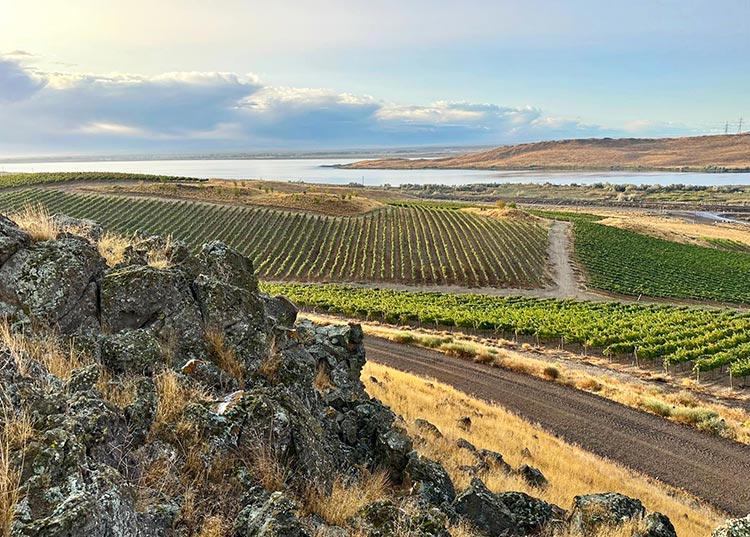
Written by Mark Storer
WINE is first and foremost an agricultural product. As with other commodities, it competes for attention on store shelves with so many other bottles that it can be hard to distinguish them apart. Yet certain wines could be dubbed ‘agricultural art,’ telling a story with a beginning, middle and end. Wine may even be agriculture’s highest expression of what the combination of land and hands can do together to create something unique. As a story, the opening paragraph is the vineyard itself.
Single-Vineyard Wines
“I think the single-vineyard is really what the wine world is all about,” says Rob Mercer, owner of Mercer Estates in Prosser. “And I’m afraid the industry is getting away from that.”
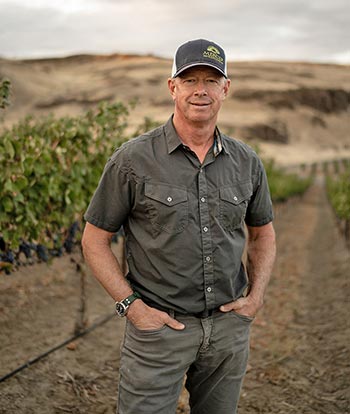
Mercer, who grows wine in the Horse Heaven Hills American Viticultural Area (AVA), says that larger wine companies are getting larger, and become synonymous only with their brands. “Wine needs to be small enough that people understand what it is. People understand an acre, and five acres, but beyond that, it can lose any connectivity. That’s why single-vineyard wines are so important to the wine culture,” he affirms.
Rob Mercer and other winemakers believe that single-vineyard wines are the future. Reclaiming the story of a wine—a winemaker, and the land on which the wine is grown—is where opportunity still exists to grow a customer base. After all, a single-vineyard wine is a story in itself, and its primary plotline isn’t just unpredictable, it changes with every vintage.
Story Of The Bottle
“Until a few years ago, we were all single-vineyard wines, and most of those even from single blocks of the vineyard,” says Dr. Bob Jankelson, owner of Tsillan Cellars in Lake Chelan. For years the winery has hosted vineyard tours, giving visitors a chance to witness firsthand where the wines they are drinking are grown; staffers pick clusters for customers to sample fresh grapes ripening on the vine and then taste wine vinified from the same grape block.
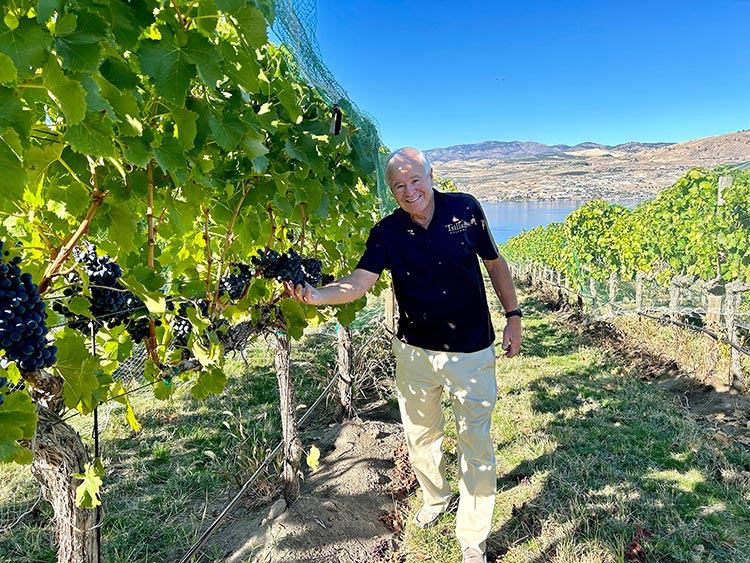
“That vineyard experience is very important,” maintains Jankelson. “Wine should incorporate all of the senses—the view, the sound of a red tail hawk over the vineyard, the story of the bottle. That bottle represents a natural story.”
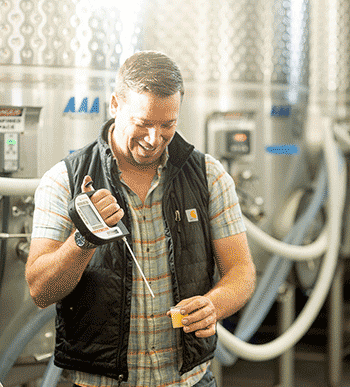
That story is one that is harder to tell if the wine is a conglomeration of hundreds of vineyards, even if it’s the same grape, a Pinot Noir, for instance, whose appellation on the bottle merely gives the name of a county where the fruit is grown. “A great wine is a gift of geography, sun and soil playing a symphony in the vineyard,” says Jankelson.
Jankelson works with Tsillan Cellars’ head winemaker, Garrett Grubbs, to make largely single-vineyard wines like Sangiovese, Dolcetto, Malbec and Syrah on an estate that once grew award-winning Red Delicious apples. It also happens to be land that Garrett Grubbs knows well, since his father farmed those apples and he grew up there.
“I take a lot more pride in these single-vineyard wines, down to the block,” says Grubbs. “My goal is to preserve and showcase what this estate has to offer.” As winemaker, he sees his dual roles as both creative artist and steward of the land he’s working from. To that end, blocks of the same grape are fermented by block, not by grape, so that decisions can be made later whether or not to blend Malbec from different parts of the vineyard, or whether the wine will stand alone from a single block within the vineyard.
Small-Lot Production
By necessity, growing and crafting single-vineyard wines is mostly a small-business practice. A winemaker can focus on only so much vineyard property at once, and that means limiting how much wine they make.
 “I don’t ever want to get into commercial distribution,” comments Jankelson, who keeps production around 8,500 cases a year. The only way to purchase their wine is direct from the winery. “That helps keep my prices down,” Jankelson says. “And with every bottle that goes out the door I make an acquaintance, I make a friend.”
“I don’t ever want to get into commercial distribution,” comments Jankelson, who keeps production around 8,500 cases a year. The only way to purchase their wine is direct from the winery. “That helps keep my prices down,” Jankelson says. “And with every bottle that goes out the door I make an acquaintance, I make a friend.”
Letting The Fruit Shine
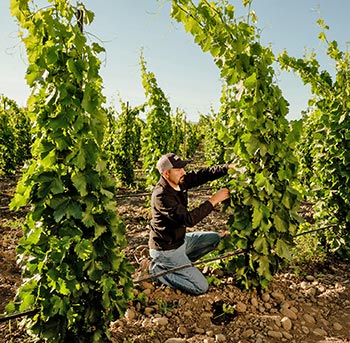
For Mike Martin, owner of The Walls Vineyards in Walla Walla, the vineyard story comes to fruition in the tasting room where two examples of Syrah are poured, one from Red Mountain AVA, and one from The Rocks of Milton-Freewater AVA near Walla Walla.
“That’s a real terroir story,” he says. “We pour them side by side. Same grape, two completely different wines.”
Syrah from Red Mountain, a warmer AVA, is generally marked by fruit-forward tastes of blueberry and blackberry, with a core of savory herb flavors, whereas a version from The Rocks is characterized more by its minerality and structural savory tastes.
“We try to be minimalist, let the fruit shine,” says Mike Martin. “We don’t want The Rocks wine to taste like Red Mountain or vice-versa. The idea is to taste the difference between these different places.”
The Right Components
“We feel strongly about terroir,” comments Ray Sandidge, founder of C.R. Sandidge Wines. The essence of each wine’s story became apparent to Sandidge early on. In 1988 he was in Germany making Riesling from 13 different sub-appellations along the Rhine river when he was asked to identify each wine and their corresponding sub-appellation.
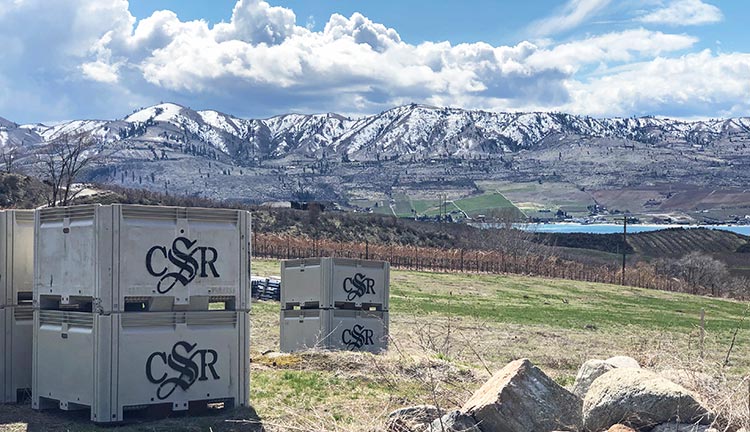
“We were using the same grape clone, same yeast, same techniques, it was just a matter of where those wines were growing, soil type, elevation, etc. Even though they were all from the same main appellation, I could tell which was which; they were each different,” says Sandidge.
Sandidge and his wife Athena own Purtteman Vineyard on the other side of Lake Chelan from Tsillan Cellars. The vineyard is planted between 1,600 and 1,800 feet in elevation and as a result, the wines they produce have different characteristics than those grown at lower elevations.

“We heard over and over again that we couldn’t achieve ripeness at this elevation, and that the only thing we could grow here was Riesling. But it’s not true,” says Athena, who is currently finishing a wine diploma from WSET. “We have that glacial/volcanic soil that creates a specific salinity that comes through. We have very intense structure in our wines from those steep diurnal shifts, from that intensity of light. Malbec really loves that light,” she says.
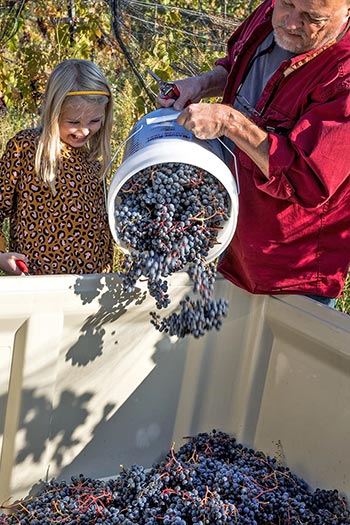
Lake Chelan AVA is one of the few that was not impacted by the Missoula floods that scoured the Columbia and Yakima Valleys thousands of years ago. The soil here is glacial till with volcanic ash, and the elevations are a bit higher, but still in a valley.
“It’s really difficult for a single vineyard to pull off a stand-alone bottle of wine—all the pieces need to come together,” Ray Sandidge says. “That’s why there’s so much blending around the world. I’m a big proponent of blending, but when I was making Tannat, Malbec and Dolcetto from the north shore, I didn’t want to mess with that. Those wines have all the components; they were so together that I didn’t want to blend them. From approach to finish, they were complete in their own right.”
Winemaking With Integrity
The Sandidges, Jankelson, Martin and Mercer all acknowledge that customers appreciate the single-vineyard approach. “Our part of the market isn’t in decline,” says Martin.
“It’s growing. We’re selling a story as much as we’re selling wine—about the land, the people who make the wine, and where they’re from. We’re building a community of like-minded people.”
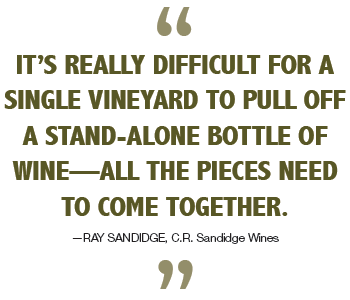
“Consumers are eating it up,” says Athena Sandidge. “They’ve been fed a lot of blends over the years, and those are usually more accessible, so they’re more curious about the single wines that make up those blends. So there’s that natural curiosity from the consumer to hear a true story, an authentic story where grapes are being grown and how.”
Jankelson calls it winemaking with integrity. “That might be the definition of single-vineyard wines,” he offers. “Respecting the natural influence, not adulterating it. It’s everything for us to maintain that.”
